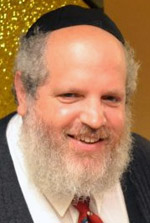Parshat Emor

CARLSBAD, California — The beginning of this week’s portion deals with many of the laws directed to the Priestly class, known in Hebrew as Kohanim. The verbiage in the first passage is unique, which means it has profound lessons for all of us. The passage says multiple times to transmit information through ‘saying’ it to others. This, in and of itself, is not so unusual, but the words used Emor and Vi’Amarta, typifies a specific type of articulation.
Many have heard the saying that Eskimos have numerous ways of saying the word ice. That is because they are experts in ice. Their expertise came about due to their surroundings. They live and breathe ice. It is their world and so they have developed nuanced language to describe ice. Well, we Jews have lots of different ways of expressing the act of verbal communication (what does that tell us about us?).
In the narrative of the Torah Moses is addressed thousands of times. Typically when he is addressed it is so that he should then transmit to the Children of Israel the information (usually a commandment) that G-d wants them to know. It is instructive to note the different ways Moses is told to verbally transmit the information – sometimes the root of the word is Daber / Tell, and sometimes (like in our case) the root of the word is Omer / Say.
What is the difference between telling (Daber) someone something and saying (Omer) something to someone? In English there may not be a difference, but in Hebrew there is a significant difference. ‘Telling’ connotes a more forceful and direct method of communication as opposed to ‘Saying’, which is considered a gentler form of verbal communication.
We can appreciate the difference when we examine how Moses conveyed G-d’s commandment to prepare the people for the Giving of the Torah. When speaking to the Sons of Israel we see that G-d told Moses to ‘Tell’ them. As opposed to when he addressed the House of Jacob (which refers to the women) he was told to ‘Say.’ The commentaries explain that due to women’s naturally occurring enhanced sensitivity to spirituality and G-dliness they did not need the admonishment that men require. Women are more intuitively connected with G-d and so the verbal instructions directed to them were softer.
Coming back to our portion we see that the Kohanim were being commanded certain strictures that applied only to them. They were also commanded to pass this teaching on to their children. In fact, this is one of the times in the Torah where we see positive necessity of transmitting information to the younger generation. The verbiage here emphasizes the manner of that transmittal. It must be done in a manner of gentleness and nurturing.
In Proverbs (22:6) we are told, “Educate a child according to his way (emphasis added), so that even when he grows he will not depart from it.” This is the essence of what we are getting at here. Education is most effective when the needs of the student are what is emphasized and when the teaching takes place with a spirit of love and in a nurturing manner. And yes, this teaching applies to each of us, whether we are a Kohen or not, as we are called a nation of Priests – we all have a spark of priesthood within us.
In fact, since every interaction we have with each other is motivated by love of each other, our communications should be done gently, in a nurturing way. When we keep this in mind our interactions will certainly reflect that reality and we will form a true community (based upon unity).
Wishing everyone an uplifting, joyous, and HEALTHY Shabbos!
*
Rabbi Yeruchem Eilfort is Director of Coastal Chabads and Chabad at La Costa. Rabbi Eilfort welcomes readers’ comments and questions and may be reached at RabbiE@ChabadatLaCosta.com.